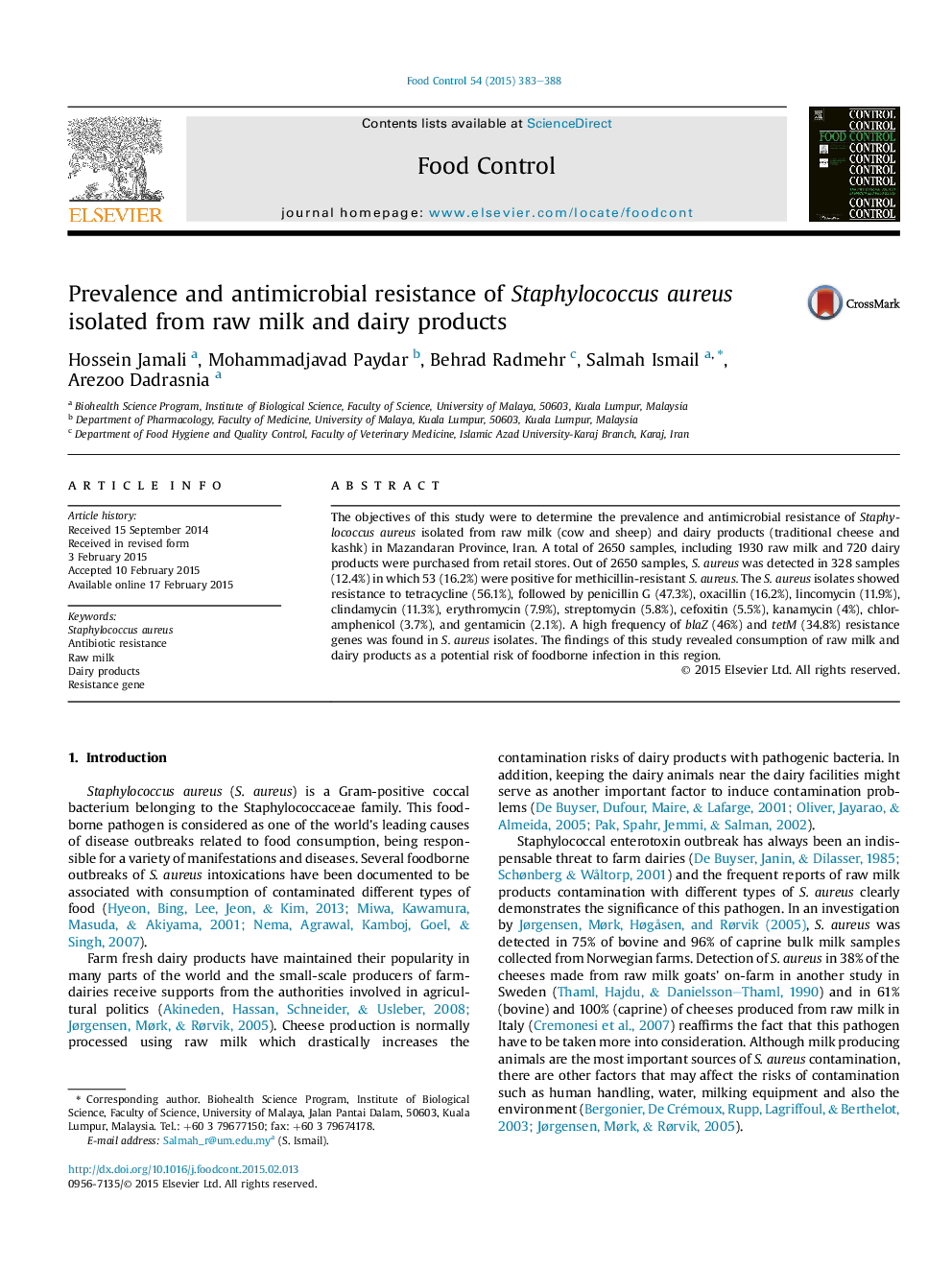| Article ID | Journal | Published Year | Pages | File Type |
|---|---|---|---|---|
| 6390910 | Food Control | 2015 | 6 Pages |
â¢12.4% of raw milk and dairy product samples were contaminated with Staphylococcus aureus.â¢16.2% of the contaminated samples were MRSA.â¢Resistance to tetracycline was common.â¢A high frequency of blaZ and tetM resistance genes was found.
The objectives of this study were to determine the prevalence and antimicrobial resistance of Staphylococcus aureus isolated from raw milk (cow and sheep) and dairy products (traditional cheese and kashk) in Mazandaran Province, Iran. A total of 2650 samples, including 1930 raw milk and 720 dairy products were purchased from retail stores. Out of 2650 samples, S. aureus was detected in 328 samples (12.4%) in which 53 (16.2%) were positive for methicillin-resistant S. aureus. The S. aureus isolates showed resistance to tetracycline (56.1%), followed by penicillin G (47.3%), oxacillin (16.2%), lincomycin (11.9%), clindamycin (11.3%), erythromycin (7.9%), streptomycin (5.8%), cefoxitin (5.5%), kanamycin (4%), chloramphenicol (3.7%), and gentamicin (2.1%). A high frequency of blaZ (46%) and tetM (34.8%) resistance genes was found in S. aureus isolates. The findings of this study revealed consumption of raw milk and dairy products as a potential risk of foodborne infection in this region.
